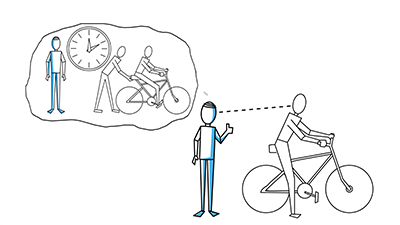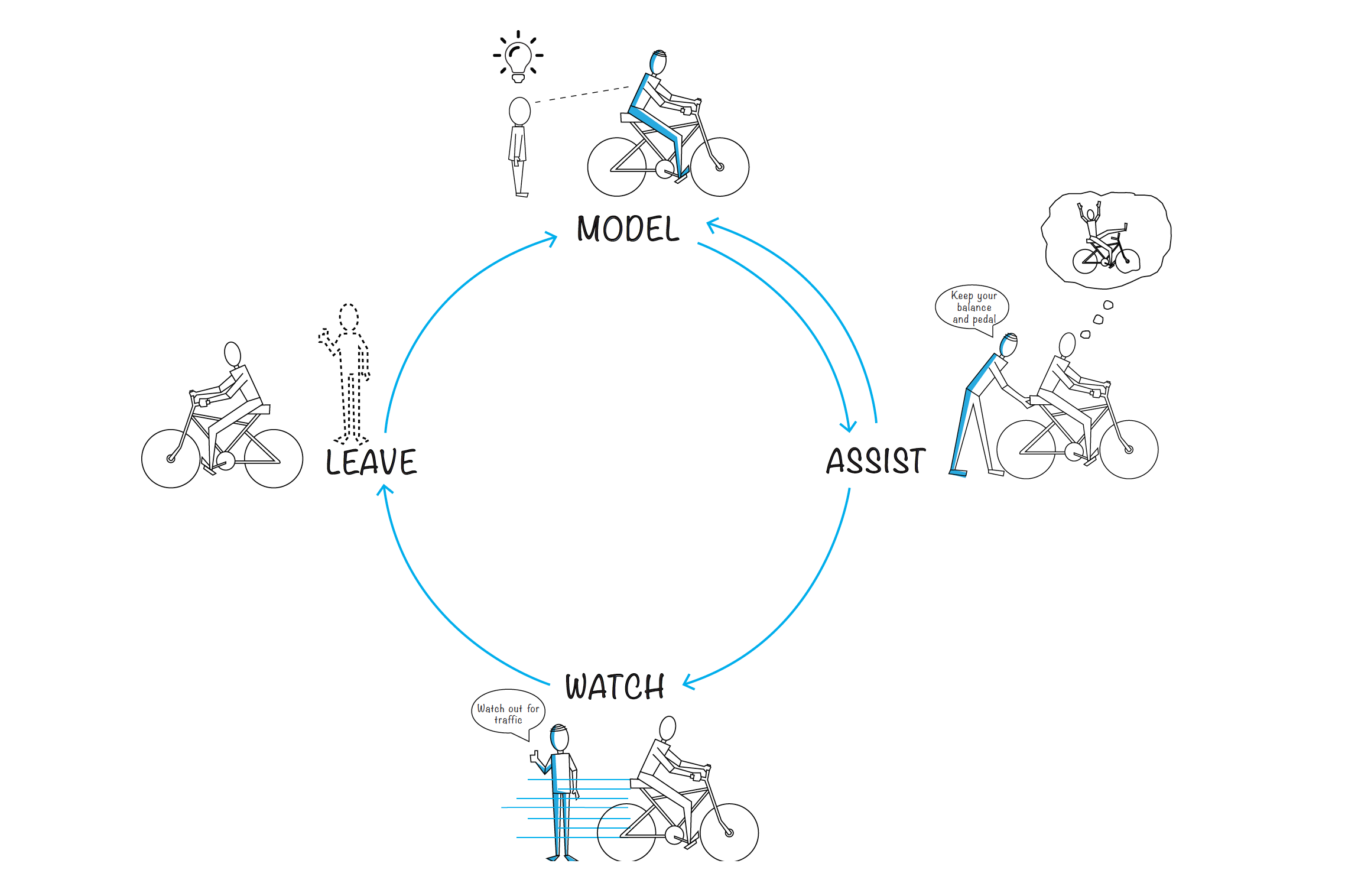
Training Cycle for Maturing Disciples
This concept is called "Training Cycle for Maturing Disciples" in session 7 of the Zúme TrainingThe training cycle is used for maturing disciples through four distinct steps of spiritual growth. The steps include: MODEL, ASSIST, WATCH and LEAVE.
The training cycle takes a disciple from new to a skill or discipline and grows their competence until they no longer need coaching in that skill. Many disciples and disciple-makers get stuck in the early steps of the training cycle (model, assist), do not spend enough time in the third step (watch), and are almost never released as with the fourth step (leave).
Watch This Video
The Training Cycle works like this:
What is the training cycle? Think of it like this. Have you ever learned how to ride a bicycle? Have you ever helped someone else learn? If so, chances are you already know the training cycle experientially.

MODEL
Modeling is simply providing an example of a practice or tool. It is the briefest part of the training cycle. It usually only needs to be done once. It is simply creating an awareness that a practice or a tool exists and giving a general idea of what it looks like. Modeling repeatedly is not an effective way to equip someone. They need to be allowed to try the skill themselves. When a child sees someone riding a bicycle, that is the MODEL phase.
ASSIST
Assisting is allowing the learner to practice the skill. This takes longer than the modeling phase. It requires “hand-holding” on the part of the mentor. The mentor needs to be directive and take an active role in coaching the learner. This phase does not last until the learner is fully competent, but merely until they understand the basics of the skill. If this phase is continued too long, then the learner will develop a dependence on the mentor and never advance to full competence. The end of the assist phase should be marked by the learner starting to model for others. When a parent is holding onto the bicycle while a child is learning to keep his balance, that is the ASSIST phase.
WATCH
Watching is the longest phase. It involves more indirect contact with the learner. It seeks to develop full competence in all facets of a skill. It may be ten times or more as long as the first two phases combined. As the learner progresses in skill, the contact with the mentor may become less regular and more ad hoc. In this phase the learner gradually takes more responsibility and initiative in the performance of the skill. Typically in disciple-making the mark of the end of this phase is when the learner has passed on the skill successfully to the fourth generation through those whom he or she is coaching. When a parent is observing a child ride a bicycle and ensuring they have adequate skills and knowledge to ride unsupervised, this is the WATCH phase.
LEAVE
Leaving is a sort of graduation when the learner becomes a peer of the mentor. Periodic contact and peer mentoring may continue to take place if the learner and mentor are in the same network. When a parent releases a child to ride their bicycle completely unsupervised, that is the LEAVE phase.
See also Coaching Checklist for Disciple Making for an example of using the training cycle in the tracking of a disciples progress.
Ask Yourself
- Have you ever been a part of a Training Cycle?
- Who did you train? Or who trained you?
- Could the same person be at different parts of the Training Cycle while learning different skills?
- What would it look like to train someone like that?
You're missing out. Register Now!
- track your personal training progress
- access group planning tools
- connect with a coach
- add your effort to the global vision!
Zúme uses an online training platform to equip participants in basic disciple-making and simple church planting multiplication principles, processes, and practices.
Zúme Training is freely offered as part of larger Zúme Vision.
 Language
Language